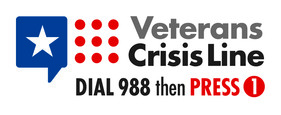
(Photo: August de Richelieu)
RAND Epstein Family Veterans Policy Research Institute conducted a study to better understand the demographics, economic characteristics, and social dynamics of Veteran households in the United States. While much research has been dedicated to Military Families, less attention has been given to the families of Veterans.
Veteran Households
RAND found that Veteran households account for about 11 percent of all households in the U.S. Compared to non-Veteran households, Veteran households are more likely to be headed by a married or partnered couple. Around 71 percent of Veteran households consist of two adults, compared to 52 percent of non-Veteran households. This higher percentage indicates that Veterans tend to form stable partnerships during and after their service.
Demographics and Family Structure
The composition of Veteran households is changing. Veterans from post-2001 service periods represent an increasingly diverse population, with 40 percent identifying as non-White and 17 percent as female. This diversity is reflected in Veteran households as well. Additionally, 54 percent of Veteran households have at least one member aged 65 or older, compared to 25 percent of non-Veteran households. The study also found a higher rate of same-sex marriages among female Veterans—almost 10 percent of marriages involving a Woman Veteran are same-sex, compared to only 0.4 percent of Male Veteran households.
Slightly more than half of married Veteran households—53 percent—were formed after military service. This shows that many Veterans marry or partner after transitioning to civilian life.
Economic Well-Being
Veteran households generally fare better economically than their non-Veteran counterparts. Veterans tend to earn higher incomes, with Veteran households less likely to experience poverty. Only 6 percent of Veteran households live below the poverty line, compared to 12.5 percent of non-Veteran households. This financial advantage is partly due to the greater job stability that Veterans enjoy, as well as the higher incomes within dual-income Veteran households. Veteran households also tend to be more resilient against economic shocks, such as unemployment.
The Need for Support
The study emphasizes the importance of adapting policies to address the evolving needs of Veteran households. Despite the growing recognition of the importance of supporting Veteran families, research has largely focused on individual Veterans rather than their households as a whole. This is a critical oversight, as the economic and social stability of Veteran households directly impacts the well-being of Veterans themselves.
The findings from RAND’s study stress the need for greater focus on Veteran households, including those from diverse backgrounds. Public sentiment supports this shift—87 percent of Americans believe the VA should do more for Veterans and their families. With increasing diversity within the Veteran population and economic challenges faced by these families, it’s essential that support systems evolve to better serve them. By recognizing the role of the entire household, not just the individual Veteran, policymakers can ensure that all Veterans and their families receive the resources they need to thrive.












